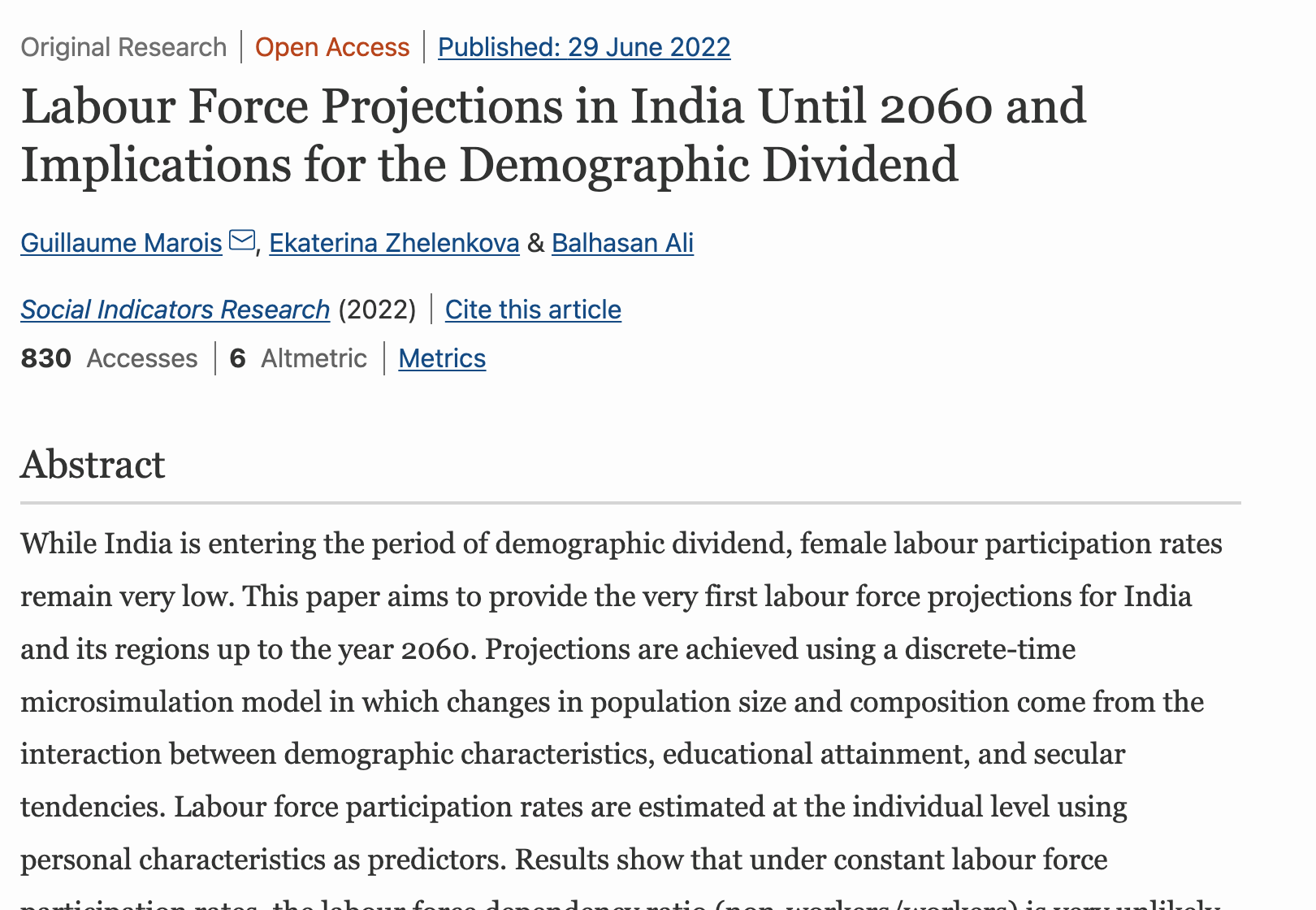Guillaume Marois, from Asian Demographic Research Institute (ADRI), recently published a new paper in theSocial Indicators Researchin June 2022. The paper title is “Labour Force Projections in India Until 2060 and Implications for the Demographic Dividend”. Guillaume Marois is the first author of this paper.

Abstract:
While India is entering the period of demographic dividend, female labour participation rates remain very low. This paper aims to provide the very first labour force projections for India and its regions up to the year 2060. Projections are achieved using a discrete-time microsimulation model in which changes in population size and composition come from the interaction between demographic characteristics, educational attainment, and secular tendencies. Labour force participation rates are estimated at the individual level using personal characteristics as predictors. Results show that under constant labour force participation rates, the labour force dependency ratio (non-workers/workers) is very unlikely to attain favourable levels, which compromises the potential demographic dividend that the country could gain from its favourable age-structure. At the subnational level, the forecast yields the most favourable dependency ratio in 2060 in the regions that combine both a low-age dependency ratio and a higher participation of women. Results moreover suggest that female labour force participation is a better driver of the labour force dependency ratio than the age composition.
Link to the article: https://link.springer.com/article/10.1007/s11205-022-02968-9